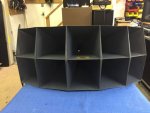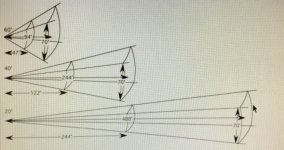Re: Help me understand the concept of speaker “throw” please.
Yes, that is correct. So why doesn't the ozone sink to the bottom of the atmosphere and end life as we know it?
Second that, wish I could explain things without sounding like a lunatic.
JR, once you start down that path, you'll soon be lost. You know that americans on average make a homonym-mistake about every too words? :lol:
So based on that Ozone O3 should be 16+16+16=48 and heavier than a lot of gasses in the atmosphere?

Yes, that is correct. So why doesn't the ozone sink to the bottom of the atmosphere and end life as we know it?
Thanks Jay for the lucid explanation. I share your low regard for so much of the climate change blather.
Second that, wish I could explain things without sounding like a lunatic.
@ Glen "dew point" ...
JR, once you start down that path, you'll soon be lost. You know that americans on average make a homonym-mistake about every too words? :lol:
Last edited:



